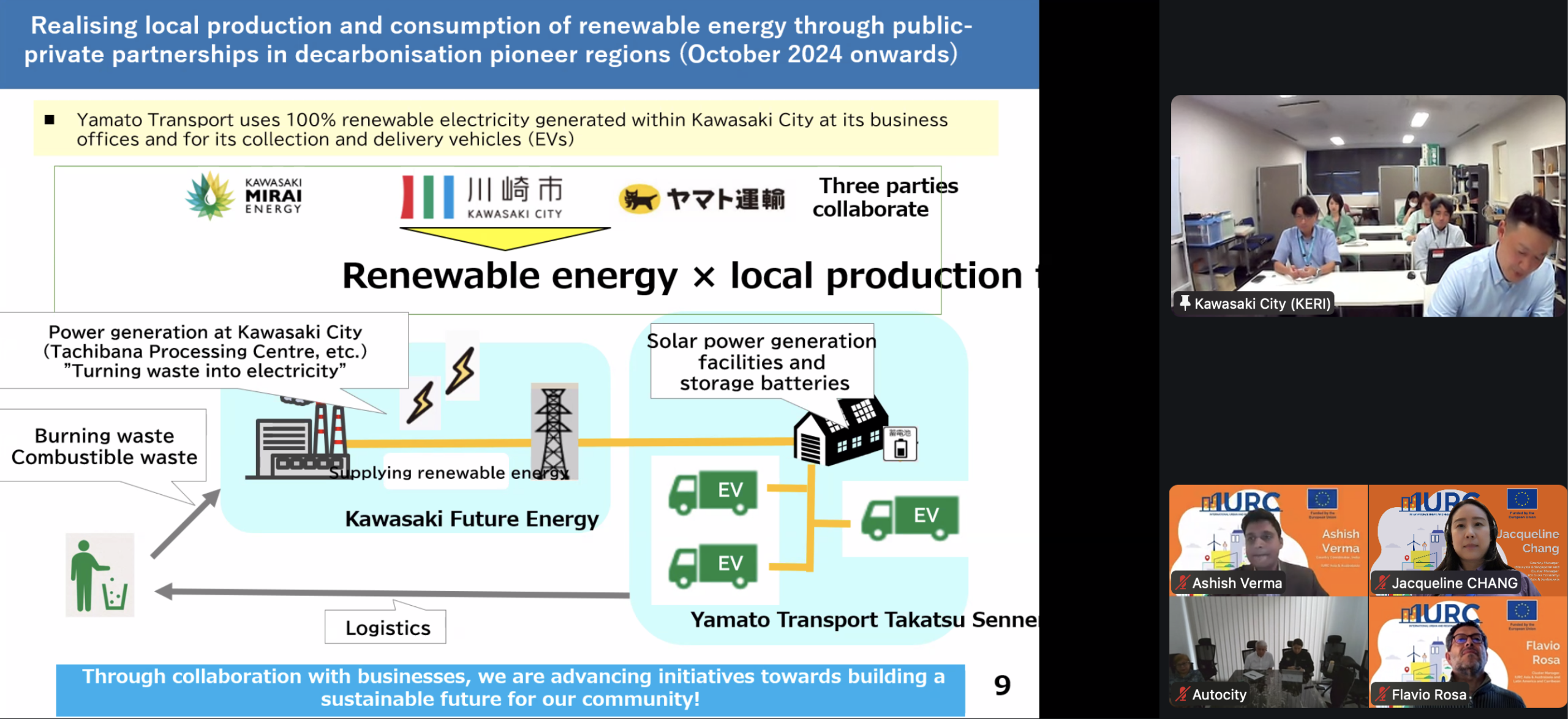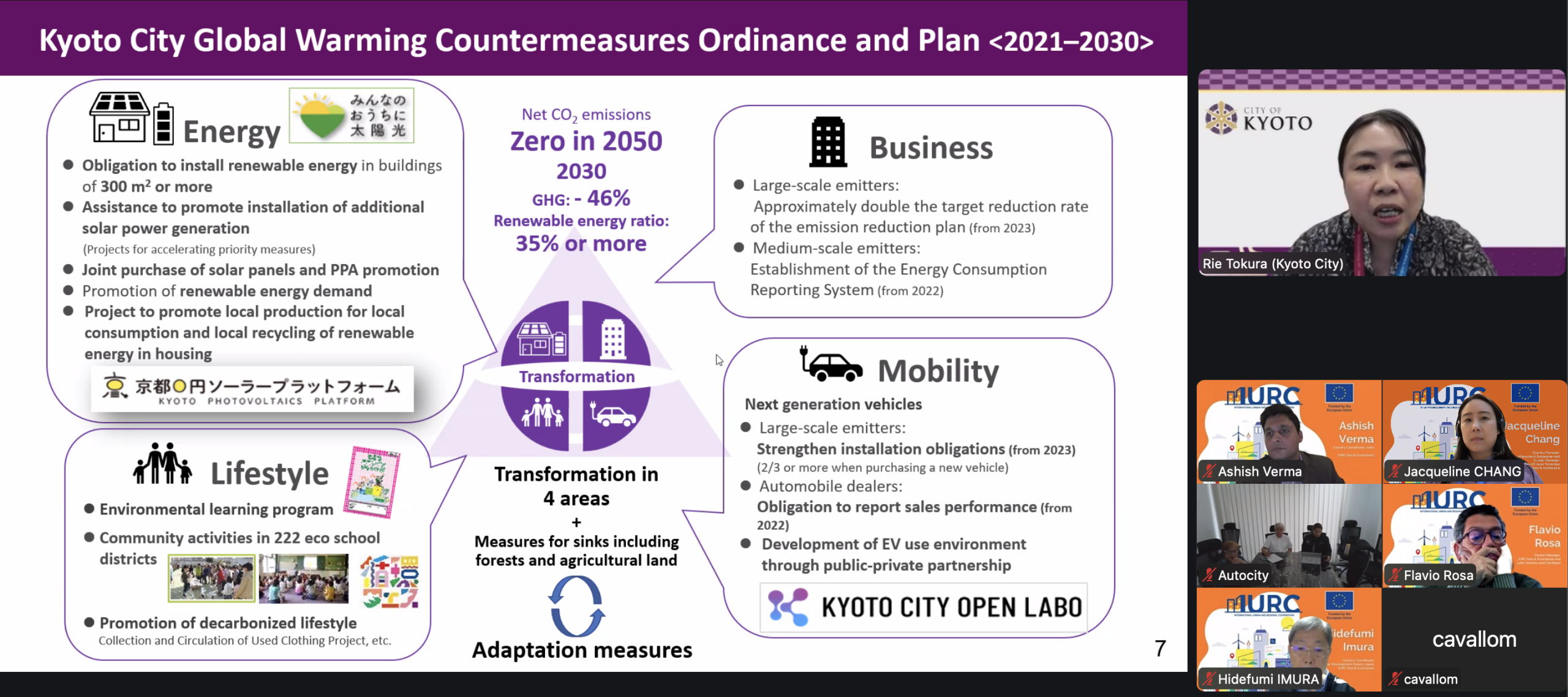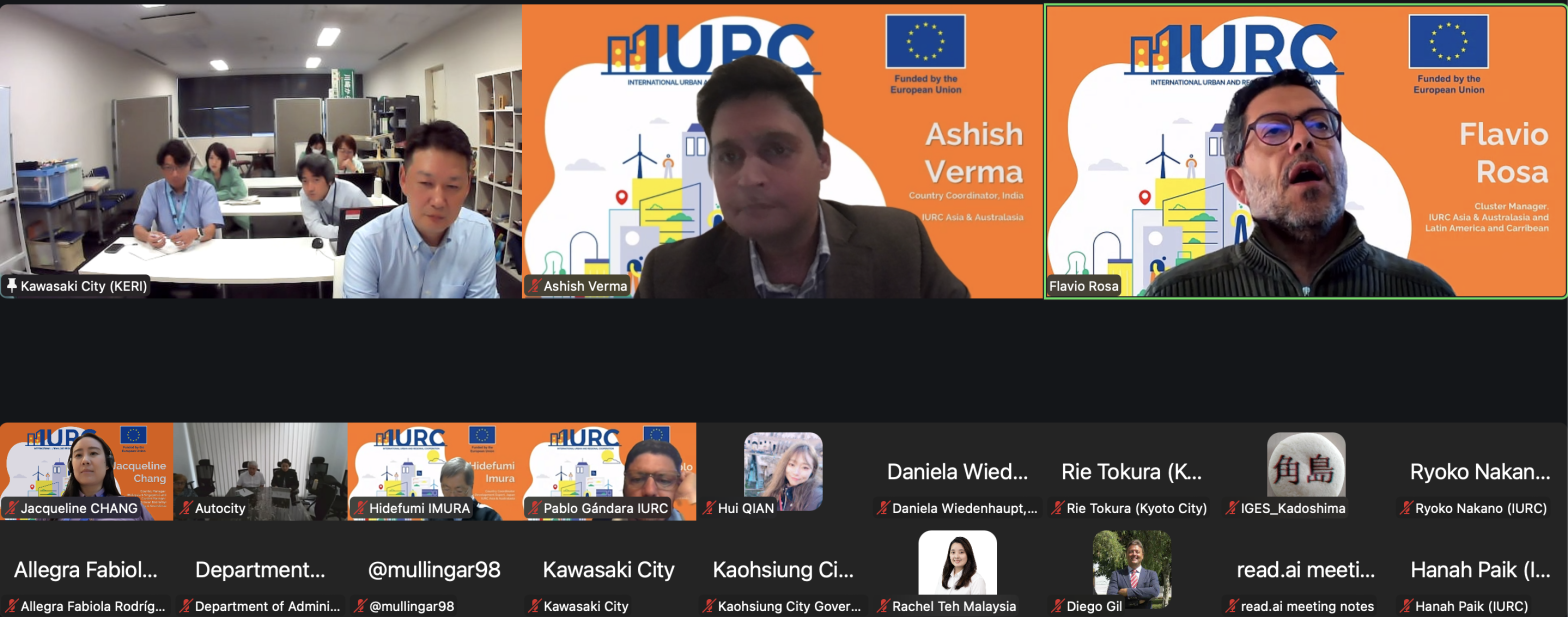16 October 2025 – Online Deep Dive Session
The International Urban and Regional Cooperation (IURC) Asia & Australasia Thematic Network held its third Global Deep Dive on Climate Adaptation, connecting city representatives from Kawasaki (Japan), Seberang Perai (Malaysia), and Kyoto (Japan). The discussion highlighted how cities are transforming climate challenges into opportunities for governance reform, technological innovation, and citizen-led resilience.
From Industrial Transition to Urban Resilience
Opening the session, Ashish Verma, Country Coordinator (India) and Cluster Manager for Climate Adaptation, outlined how the cluster supports cities in embedding adaptation across local policy frameworks. Building on earlier deep dives focused on nature-based solutions, financing, and community resilience, this third session explored governance, heat resilience, and inter-city learning.
“Cities are moving from climate planning to climate practice—embedding resilience into governance, infrastructure, and people’s everyday lives,” Verma stated. He encouraged cities to continue exchanging by following our LinkedIn page and announced an upcoming in-person exchange at the Smart City Expo World Congress in Barcelona.
Kawasaki: Industrial Innovation Meets Decarbonization
Tetsuro Yoshida, Research Manager at IGES (on behalf of Kawasaki City), shared Kawasaki’s evolution from an industrial hub to a pioneer in decarbonization and climate adaptation. The city achieved a 15.3% GHG reduction (2013–2022) and aims for net-zero by 2050. Through public-private collaboration, the Kawasaki Future Energy Corporation supplies renewable electricity from waste-to-energy plants to over 248 public facilities, while a 2025 ordinance will require solar installations in all new buildings.

Kawasaki also works with Japan’s National Institute for Environmental Studies to map urban heat risks and design targeted heatstroke prevention measures. “Our goal is not only to reduce emissions,” said Yoshida, “but to build a city where environmental health and human well-being progress together.”
Seberang Perai: Building Climate Resilience through Nature and People
From Malaysia, Rachel Teh, City Councillor at the Seberang Perai City Council, presented how the city integrates blue-green infrastructure and community-driven adaptation into its Sustainability Agenda 2030.
Flagship projects such as the Sungai Perai River Revitalization and eco-park retention ponds merge flood mitigation with improved livability and biodiversity. Smart drainage systems and IoT-based flood sensors now support real-time disaster response, reducing flood incidents by 35% in key zones.

Teh emphasized citizen engagement as central to the city’s approach: “The people of Seberang Perai are not just beneficiaries of resilience—they are the drivers of it.” The city’s upcoming Resilience Hub will expand this community-driven model to promote circular economy solutions.
Kyoto: Tradition Inspiring Climate-Smart Futures
Rie Tokura, Assistant Director for International Cooperation at Kyoto City, presented the Kyoto Climate Action Plan 2050, which unites heritage preservation with forward-looking innovation. The city’s Comprehensive Climate Adaptation Ordinance (2018) integrates resilience across planning, public works, and land use.

To combat heat island effects, Kyoto promotes green roofs, cool pavements, and climate-cooling public spaces. Its “One Action, One Person” campaign empowers citizens to take measurable steps toward adaptation and sustainability. “Kyoto’s heritage and resilience are two sides of the same coin,” Tokura noted. “Our traditions teach us balance — and guide us to innovate sustainably.”
Shared Learning for Future Collaboration
The discussion underscored that while the three cities differ in their approaches—industrial innovation in Kawasaki, community-based resilience in Seberang Perai, and heritage-driven adaptation in Kyoto—they share a common goal: to build cities that thrive under changing climates through science-based governance and inclusive partnerships. “The deep dives are helping cities translate learning into local action,” Ashish Verma concluded. “From clean energy systems to flood-resilient parks and climate-smart heritage zones, Asian cities are redefining resilience through innovation, partnership, and people.”
